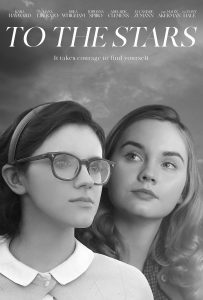
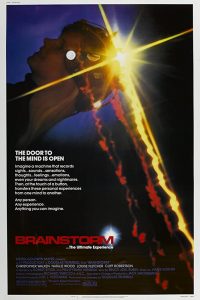








“Far From the Tree” (2017 production, 2018 release). Cast: Andrew Solomon, Jason Kingsley, Emily Perl Kingsley, Jack Allnutt, Amy Allnutt, Bob Allnutt, Loini Vivao, Leah Smith, Joseph A. Stramondo, Howard Solomon, John Habich Solomon, Derek Reese, Lisa Reese, Tyler Reese, Rebecca Reese, Charles Kingsley (archive footage). Directors: Rachael Dretzin and Jamila Ephron. Book: Andrew Solomon, Far from the Tree. Web site. Trailer.
When a couple settles down to start raising children, the parents-to-be generally assume that everything is going to turn out “normal,” that their hopes and wishes for the typical “mainstream” family are going to materialize free of challenges and difficulties. But what happens when things don’t pan out as expected? Significant differences in any number of areas, from physical attributes to emotional temperaments to sexual orientation, can knock parents for a loop, leaving them to wonder what can or should be done for their offspring – if anything at all That’s the question posed in the engaging 2017 documentary, “Far From the Tree,” available for home viewing.
When gay author Andrew Solomon was growing up, he knew his sensibilities were different from those of other boys his age. The things that typically interested his peers held no appeal for him. And, as he grew older, he also realized this carried over into the area of sexuality. He wondered why he was different and often fretted over his attraction to members of the same gender, even going so far as to look for solutions to change his ways, such as paying visits to female sex workers in hopes that they would be able to “convert” him. Alas, though, nothing worked, and he realized his only choice was to accept or deny his orientation; change was not an option.
Solomon took the bold move to accept himself and be open about it, a risky venture during a far less tolerant time. It initially cost him his relationship with his parents, especially his mother, Carolyn, who drilled the notion into his head that he would never be happy, mainly because of the inherent “instability” of gay relationships. Nevertheless, Solomon stayed with his decision and sought to make his way in the world.
During his process of self-discovery, Solomon asked himself how he could end up so unlike the family into which he was born. But, the more he pondered this question, the more he expanded his inquiry into differences of other kinds, be they emotional, physical or behavioral. How did the parents and families of children who exhibited such other distinctions handle their situations? Did they view their kids’ conditions as “differences” or “disabilities”? Did they see their sons and daughters as saddled with handicaps, or were their children posed with challenges to address and overcome? Indeed, as Solomon himself put it, were these deviations from the norm meant to be looked upon as things to be fixed or celebrated?
It was with those questions in mind that Solomon set about to write what would eventually become the best-selling, much-applauded nonfiction title, Far from the Tree, the book that formed the basis for this documentary. In addition to exploring his own personal odyssey, his book and this film examine the special needs and circumstances of children who turned out vastly different from their parents and siblings. Through these cinematic and literary channels, author Solomon and filmmakers Rachel Dretzin and Jamila Ephron address the experiences of families affected by children with Down syndrome, autism, dwarfism and criminality. The result is a series of remarkable stories in which the challenges were great and hard-fought solutions took considerable effort to be realized – but often with inspiring results. These apples may have fallen, bounced and rolled considerable distances from their boughs, but the fruit is in many respects just as ripe.
Consider, for example, the experience of Jason Kingsley, who was born with Down syndrome. At the time of his birth, his mother, Emily, was advised to give up the child and have him committed to a special facility, essentially out of sight and away from public view. Emily’s health care providers explained that Jason wouldn’t have much of a life, unable to learn and to interact with society in the same way that other children do. It was widely believed that their suggested solution – the standard at the time – would remove the “burden” of trying to raise a child with such a condition, easing life for Emily and her husband, Charles.
[caption id="attachment_11491" align="aligncenter" width="350"]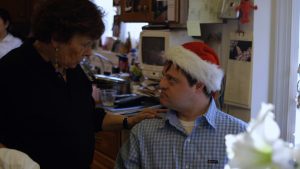 Born with Down syndrome, Jason Kingsley (right) has achieved much in his life, thanks to the tireless efforts of his mother, Emily (left), as seen in the excellent 2017 documentary, “Far From the Tree,” available for home viewing. Photo courtesy of Sundance Selects.[/caption]
Born with Down syndrome, Jason Kingsley (right) has achieved much in his life, thanks to the tireless efforts of his mother, Emily (left), as seen in the excellent 2017 documentary, “Far From the Tree,” available for home viewing. Photo courtesy of Sundance Selects.[/caption]
Emily and Charles, however, would have none of that. They didn’t buy into the idea that Jason was fundamentally incapable of attaining an education; they believed that he could grow up to have a meaningful, productive and contributing life. But, even more important than that, they simply couldn’t abide by the idea of just giving him away. As Emily put it, one doesn’t stop loving a child just because he or she might have a special condition; a parent just doesn’t do that.
And, as it turned out, Emily and Charles were right. Jason mastered subjects that he supposedly wasn’t capable of learning. He even became something of a celebrity, appearing as an actor on episodes of such TV shows as Sesame Street, The Fall Guy and Touched by an Angel, as well as a guest on talk shows. He graduated from high school and a post-secondary school for students with special needs, and he has since gone on to hold a full-time job and live mostly independently with two other Down syndrome housemates.
Jack Allnut has followed a life path in many ways similar to Jason Kingsley. His parents, Amy and Bob, say that Jack’s early life was seemingly normal. But, then, while a toddler, he began to withdraw, unable to speak and often acting out in tantrums. It became apparent that he was autistic, and nothing Jack’s parents did seemed to help – until they met a special therapist who discovered that a remarkable individual resided within Jack. Through an unorthodox treatment technique, the therapist was able to communicate with Jack in a special way. Jack explained that he understood what was going on around him but that he was unable to convey his thoughts through speech, a hindrance that relentlessly frustrated him and prompted much of his behavior. However, with this new channel of communication now open, the Allnut family discovered that Jack was highly intelligent – an aptitude he applied to schooling, achieving exceptional grades in many of his classes.
[caption id="attachment_11492" align="aligncenter" width="350"] Jack Allnutt (left), who developed autism at a young age, has learned how to manage his condition and become a stellar student thanks to special therapy and the loving support of family members like his father, Bob (right), as chronicled in the documentary “Far From the Tree.” Photo courtesy of Sundance Selects.[/caption]
Jack Allnutt (left), who developed autism at a young age, has learned how to manage his condition and become a stellar student thanks to special therapy and the loving support of family members like his father, Bob (right), as chronicled in the documentary “Far From the Tree.” Photo courtesy of Sundance Selects.[/caption]
Carrying on a “normal” social life and being able to have a family life are difficult when one is half as tall as everyone else. Just ask Loini Vivao, Leah Smith and Joseph A. Stramondo. But that doesn’t mean it’s impossible, either. These three adults who have grown up with dwarfism may not share the same physical attributes as their full-sized peers, but that doesn’t mean they don’t want the same things out of life as their taller counterparts. Their stories are examined in various ways, such as their attendance at conferences and social gatherings organized specifically for them, as well as the determined efforts of husband and wife Joseph and Leah to have a child. The means for addressing their needs may be different in nature from those of Jason and Jack, but the empowering assistance they receive from their respective support resources (particularly family members) is just as significant. And the incalculable impact of all this is meaningful beyond measure for the lives they seek to lead.
For all these success stories, however, some others are painful, no matter how earnestly one tries to address them. Such is the case for the Reese family, whose teenage son, Trevor, was convicted of an inexplicable, brutal murder of a young child. Trevor had what appeared to be a bright future ahead of him until he committed this senseless killing, an incident so shocking and out of character that even the perpetrator doesn’t know why he did it. He pled guilty to the charges, sparing him the death penalty but resulting in a sentence of life in prison.
The fallout in this case has left the family with what is arguably the greatest burden to bear in all of these stories, given that the fruit has fallen farthest from the tree and saddled them with a future that realistically holds the dimmest prospects for change. Parents Derek and Lisa and their other two children, Tyler and Rebecca, picked up and moved out of state in hopes of a new start, but difficulties linger. Derek and Lisa explain that they often find themselves being vague about their past when meeting new people, given that being too candid frequently doesn’t help in forging new friendships. And Tyler and Rebecca have said that they have no desire to become parents, decisions made out of an abundance of caution. The family still communicates with Trevor, trying to offer whatever encouragement they can under these trying conditions. But, given what the Reeses are up against, what more can they do than continually hope for the best for everyone – even Trevor – going forward?
[caption id="attachment_11493" align="aligncenter" width="350"]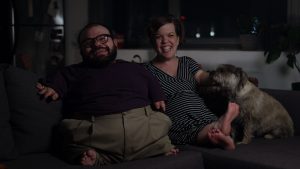 Husband and wife Joseph A. Stramondo (left) and Leah Smith (right) won’t let dwarfism stop them from becoming parents, as detailed in “Far From the Tree.” Photo courtesy of Sundance Selects.[/caption]
Husband and wife Joseph A. Stramondo (left) and Leah Smith (right) won’t let dwarfism stop them from becoming parents, as detailed in “Far From the Tree.” Photo courtesy of Sundance Selects.[/caption]
And then there’s Andrew’s story, which, like the others, started out with more than its share of difficulties. Over time, though, with changes in social conditions and greater acceptance of alternate lifestyles, the author has come into his own as a successful writer. He has also forged a happy home life with his husband, John, and their many children. But, perhaps most importantly, Andrew has made peace with his father, Howard, proving that, when it comes to the bond of blood relations, sometimes the distance from the branches doesn’t matter a bit.
At first glance, many might look upon the situations of these families and individuals as tragic. How can one bear up under such conditions? Is there no hope for a fulfilling life? What is one to do?
However, as these stories illustrate, remarkable miracles often come out of such circumstances. Unexpected joys, heartfelt love, tremendous accomplishments and the means to help others often result from such scenarios, and there’s much to be said for that. It may take getting past some well-entrenched social stigmas and inherent challenges, but that does not mean all is lost, especially if one believes to the contrary. And that belief component is crucial, for it drives the conscious creation process, the philosophy that maintains these intangible resources are drawn upon in manifesting the reality we experience.
If that’s true, though, one might rightfully ask, “Why would anyone materialize such arduous conditions in the first place?” That’s a legitimate question given the difficulties involved in handling such situations. But the reasons behind why any of us manifests what we do is our business and not subject to outside scrutiny or judgment, no matter how innately challenging those circumstances are.
In many cases, individuals and families who create such conditions do so to learn particular life lessons, including those that may be difficult to endure. Given that conscious creation makes anything possible, and considering that our being’s greater purpose is to know what it’s like to experience the full range of existence, at some point we may well choose to go through some of these more challenging undertakings. We may not be consciously aware that we have decided to do so, nor may we even be aware of conscious creation as a practice. However, that does not mean we don’t employ it in manifesting the lives we lead, to see what they have to offer (for better or worse), to determine if we’re able to overcome their intrinsic limitations and to explore what our experiences may contribute to the overall human condition. Those are sincerely noble aspirations, and what we experience through these opportunities may truly astonish us and our peers.
[caption id="attachment_11494" align="aligncenter" width="350"]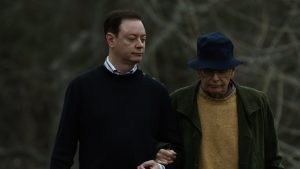 After years of struggles over his sexuality, gay author Andrew Solomon (left) has made peace with his father, Howard (right), as detailed in the documentary “Far From the Tree,” based on the writer’s best-selling, critically acclaimed book of the same title. Photo courtesy of Sundance Selects.[/caption]
After years of struggles over his sexuality, gay author Andrew Solomon (left) has made peace with his father, Howard (right), as detailed in the documentary “Far From the Tree,” based on the writer’s best-selling, critically acclaimed book of the same title. Photo courtesy of Sundance Selects.[/caption]
This is especially true when it comes to such undertakings as overcoming fears and pushing past limitations. Through these ventures, we may well see that we’re capable of so much more than we truly thought possible, and this applies to both the individuals directly affected, as well as those around them. By trying out alternate lines of probability, we may end up devising inventive solutions to longstanding difficulties. This can end up benefitting not only us, but also others who are similarly situated. And, in that regard, we may end up doing great services to humanity in the arts, technology, health and well-being, and other areas of endeavor. Conscious creators refer to this as the practice of value fulfillment, that of being our best, truest selves for the betterment of our individual beings, as well as the whole of mankind. Who would think that such innovation could emerge from what many others may offhandedly refer to as “adversity”?
This excellent examination of how individuals and families cope with various challenges that place them outside the mainstream of society enlightens and inspires throughout. While the documentary could use expansion in some areas and judicious snipping in others, the overall production is insightful, especially when it comes to redefining what actually constitutes the meaning of “family,” as well as what conditions need to be encouraged rather than altered or eliminated. “Far From the Tree” is likely to leave viewers with a wide range of impressions that they haven’t considered before. Check it out on DVD or video on demand – you’re sure not to be disappointed.
The lives we lead may not be for everyone. They may deviate significantly from what others believe we should want and from what they have painstakingly prepared for us. But, then, what we bring out of these experiences may end up being immeasurably more uplifting and meaningful, and not just for ourselves. We may like to believe that apples shouldn’t fall far from their trees, but sometimes working in a little distance can prove to be revelatory for us as individuals, as families, and, in the long run, as a species.
Copyright © 2020, by Brent Marchant. All rights reserved.
“To the Stars” (2019 production, 2020 release). Cast: Kara Hayward, Liana Liberato, Adelaide Clemens, Malin Akerman, Tony Hale, Jordana Spiro, Shea Whigham, Lucas Jade Zumann, Madisen Beaty, Lauren Ashley Stephenson, Sophi Bairley, Tina Parker, Matt Coulson, Natalie Canerday, Doug Jackson. Director: Martha Stephens. Screenplay: Shannon Bradley-Colleary. Web site. Trailer.
Adolescence is seldom an easy time for many of us. It’s an age of exploration and experimentation, a period when we examine the world and ourselves to see how we mesh together. The fit isn’t always exact, though, particularly when our authentic selves differ significantly from what we see around us. It often prompts us to retreat into our shells, sometimes covering our eyes in the process as we struggle to reconcile the discrepancies. But, no matter what coping mechanisms we may employ, coming of age can still be a trying time until we find the key to unlock this especially troublesome door. So it is for a teenager seeking to find herself in the new period piece drama, “To the Stars.”
For a sensitive, misunderstood loner like Iris Deerborne (Kara Hayward), attempting to fit in can be a daily exercise in emotional distress and personal frustration. After all, life in small town Wakita, Oklahoma in the 1950s can be stifling enough in itself, let alone for someone whose outlooks and sensibilities aren’t on the same wavelength as everyone else. The constant pressure to conform, as well as many failed attempts at being like everyone else (and the resulting ridicule that comes from those efforts), have taken their toll, leaving Iris with her share of neuroses. In particular, she suffers from bladder control issues, a condition that has prompted her snarky high school classmates to label her with the insulting nickname “Stinky Drawers.”
It doesn’t help that those around Iris continually reinforce the angst she feels. For example, her mother, Francie (Jordana Spiro), a budding alcoholic who shamelessly flirts with local teenage boys, constantly badgers Iris to improve herself, most notably by looking for ways to land a boyfriend. Mom is lovingly supportive of her daughter but only as long as Iris follows her recommendations; whenever the adolescent seeks to follow her own impulses, Francie’s snarly side comes out, her venomous attitude fueled by a mix of generational jealousy and retribution for rejection of what she believes to be foolproof recommendations.
[caption id="attachment_11482" align="aligncenter" width="350"]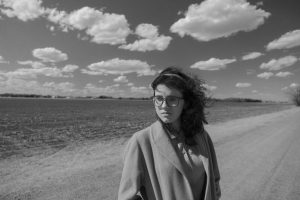 Sensitive, misunderstood loner Iris Deerborne (Kara Hayward) struggles to assimilate into the confining culture of 1950s small town Oklahoma in the new coming of age saga, “To the Stars.” Photo courtesy of Samuel Goldwyn Films.[/caption]
Sensitive, misunderstood loner Iris Deerborne (Kara Hayward) struggles to assimilate into the confining culture of 1950s small town Oklahoma in the new coming of age saga, “To the Stars.” Photo courtesy of Samuel Goldwyn Films.[/caption]
But the troubles don’t stop at home. Iris is bombarded by even more teasing and mockery at school from a pack of mean girls, the popular, cheerleader types who refer to their little clique as “the Songbirds.” Clarissa Dell (Madisen Beaty), the leader of this spiteful little coterie, dishes out more than her share of hurtful barbs, even advising others that hanging out with Iris is tantamount to social suicide. Her efforts are backed by a pair of minions, Rhonda Robertson (Lauren Ashley Stephenson) and Hattie McCoy (Sophi Bairley), sidekicks who handily get in their fair share of cheap shots and faithfully back their alpha when called upon.
Iris seeks solace by looking for ways to be by herself. She frequently hides out in her bedroom, buried under the covers with a transistor radio plastered against her ear. She also goes for late night swims in a nearby pond, one that most locals avoid given that it was the site of a young mother’s tragic suicide. All in all, it’s a pretty lonely life. In fact, the only people who show Iris any meaningful respect and support are her father, Hank (Shea Whigham), and the family’s teenage farmhand, Jeff (Lucas Jade Zumann), son of the woman who killed herself.
Things take a drastic turn, however, when a new student arrives at Wakita High, Maggie Richmond (Liana Liberato). The urban transplant, who recently relocated to Oklahoma with her family from Kansas City, exudes an air of confidence that allows her to carry herself with authentic self-assurance – and to quickly put the Songbirds and pushy teenage boys in their place whenever the need arises. She also uses this confidence to come to Iris’s rescue whenever she’s being taunted by others, a sort of combination big sister and bodyguard.
Iris is initially perplexed by Maggie’s unsolicited support. Since almost no one has ever come to her defense before, she fails to understand why anyone would have her back. But, the more time they spend together, the more a bond is forged between the two. In addition to protecting Iris from the malicious influences around her, Maggie also helps to bring her shy friend out of her shell. She shows Iris how to change her appearance, providing her with clothing and make-up tips, as well as teaching her how to be more impulsive and in charge of her life. She even takes Iris for a visit to the local beautician, Hazel Atkins (Adelaide Clemens), for a makeover, a transformation that catches the eye of Dad and Jeff and even evokes new reactions from the Songbirds. In fact, the only one who seems unmoved by these changes is Francie, who expresses an undefined mistrust of Maggie; is this because Iris follows her friend’s makeover recommendations over hers, or is there something more behind her suspicion?
[caption id="attachment_11483" align="aligncenter" width="350"]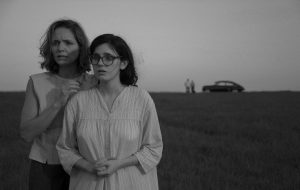 Sensitive, misunderstood loner Iris Deerborne (Kara Hayward, right) seeks to work out her conflicted relationship with her mother, Francie (Jordana Spiro, left), in director Martha Stephens’s latest release, “To the Stars.” Photo courtesy of Samuel Goldwyn Films.[/caption]
Sensitive, misunderstood loner Iris Deerborne (Kara Hayward, right) seeks to work out her conflicted relationship with her mother, Francie (Jordana Spiro, left), in director Martha Stephens’s latest release, “To the Stars.” Photo courtesy of Samuel Goldwyn Films.[/caption]
Over time, despite the closeness that Iris and Maggie have forged, a certain inexplicable tension begins to mount between them. Maggie, it seems, is starting to pull away, alienating herself from her parents (Malin Akerman, Tony Hale), attempting to force a relationship with a football player (Matt Coulson) for whom she has no apparent feelings and spending more time with Hazel. To repay all the kindnesses Maggie extended to her, Iris now tries to return the favor to her friend, but she’s met with the sort of mistreatment she once received from others.
What happened? That question’s answered as the film races toward its conclusion. In a curious mix of surprises and predictability, the characters play out their story, one that in some ways rockets out in new directions while simultaneously coming full circle. The protagonists may reside in Oklahoma, but their journey also takes them someplace more magical – to the stars.
At the outset of this story, one can’t help but look upon Iris and sigh “Poor girl.” She’s desperately struggling to navigate choppy waters in which she’s given precious little opportunity to be herself. Her outcast ways repeatedly place her in difficult circumstances from which there is seemingly no escape. And, the more they recur, the more exasperating it becomes to extricate herself from them. What is she to do?
As vexing and menacing as this situation is, and as troubling as the actions of those around her are, Iris herself also plays a role in her tribulations by unwittingly allowing those conditions to persist. She has firmly come to believe in the negative nature of her circumstances to such a degree that she can’t see her way past them. And that’s attributable to the conscious creation process, the philosophy that maintains we draw upon those metaphysical resources to manifest the existence we experience. Even if Iris has never heard of this practice (which, in all likelihood, she hasn’t), she nevertheless consistently draws upon it to create – and reinforce – the reality around her.
Obviously Iris needs a way out to turn things around, but where does she begin? She likely isn’t aware of the power of her beliefs and what they’re manifesting, let alone how to change them to something preferable. Yet she also recognizes, even if in unspoken solitude, that she’s not allowing her true, authentic self to shine through. Without a clue on how to proceed in altering her existence, she seeks to latch on to some kind of catalytic spark to help show her how.
[caption id="attachment_11484" align="aligncenter" width="350"]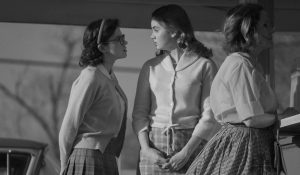 Urban transplant Maggie Richmond (Liana Liberato, center) strikes up an unusual friendship with sensitive, misunderstood loner Iris Deerborne (Kara Hayward, left) when the city girl moves to small town Oklahoma in “To the Stars.” Photo courtesy of Samuel Goldwyn Films.[/caption]
Urban transplant Maggie Richmond (Liana Liberato, center) strikes up an unusual friendship with sensitive, misunderstood loner Iris Deerborne (Kara Hayward, left) when the city girl moves to small town Oklahoma in “To the Stars.” Photo courtesy of Samuel Goldwyn Films.[/caption]
Enter Maggie. In a relatively short time, the newcomer opens Iris’s mind to possibilities that she hadn’t previously considered. This empowers the wallflower to explore new options and to develop the self-confidence necessary to bring them into being. It’s as if a lightbulb flashes on, enabling Iris to tell herself “I can do that,” a realization she’s never contemplated, let alone embraced, before. Almost overnight, Iris goes through a transformation unlike anything she’s ever experienced.
Key to this is Iris giving herself permission to rewrite her beliefs. She decides it’s time to come out of her shell, to start participating in life more fully than she ever has. It enables the authentic Iris to surface, the one who gives her life meaning, satisfaction and fulfillment, no matter how counter it runs to the lives and expectations of others around her. Indeed, it represents a far cry from her past self.
Interestingly, this alteration to Iris’s reality echoes outward to those around her. Once she’s developed the confidence to change her circumstances, she feels empowered to help others do the same. For instance, the example she sets helps to evoke new and different reactions toward her from the Songbirds, as well as to unexpectedly turn Jeff’s head. Iris even feels capable enough to try and help her mentor when she experiences emerging challenges, even if she doesn’t fully understand what her friend is going through. That’s quite a turnaround, to be sure.
The evolution Iris undergoes also illustrates one of conscious creation’s cornerstone principles – that everything is in a constant state of becoming. Thankfully, that’s generally fortuitous, too, especially when we witness the kind of unrelenting stagnation Iris experiences at the film’s outset. If she were to continue living that kind of life, we can only imagine the lack of fulfillment and joy she probably would have had to endure going forward.
Fortunately, Iris develops an awareness of alternatives and the wisdom to act upon them by shifting her beliefs and backing them up with actions. This is a process that takes courage to overcome our fears and limitations, to be willing to take the steps necessary to explore uncharted territory, to live a truly heroic life. That’s an accomplishment to be commended and celebrated for it brings to us so much more than what we might have imagined and can make the creation of our reality such an overwhelmingly exhilarating experience – even in small town Oklahoma.
This endearing offering from the coming of age genre provides viewers with a story chock full of surprises, warmth and incisive humor. While the film has its share of clichés (especially in the last half hour), it redeems itself by serving up a touching, inspiring friendship story, the kind that’s seen all too rarely in contemporary cinema. Exquisitely filmed in black and white with a fine cast, smart writing and an atmospheric score, this latest production from director Martha Stephens recalls such releases as “The Last Picture Show” (1971) and “Desert Hearts” (1985) but with a narrative and sensibilities all its own. This Grand Jury Prize nominee from the 2019 Sundance Film Festival may not have attracted much attention, but it’s definitely a heartwarming charmer, now available through first-run online streaming.
As we make our way into adulthood, we must inevitably pass through the sometimes-narrow portal that is youth, something we frequently look back on in later years as being wasted on the young. However, as challenging as this time can be, it often prepares us for what’s to come, helping us become the individuals we are in our maturity. Through various fits and starts, we have an opportunity to come out of our shells and discover our authentic selves, tweaking our thoughts, beliefs and intents as needed to become who we want to be and lead the life that suits us. The possibilities in this are astronomical – and as bright as all the stars in heaven.
Copyright © 2020, by Brent Marchant. All rights reserved.

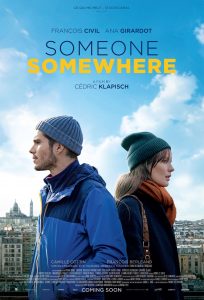
Recently, a terrific 2018 article from Popular Mechanics magazine has been circulating social media telling the back story about a little-known and often-overlooked sci-fi classic from 1983, “Brainstorm” (web site, trailer). The film, which almost didn’t make it to the big screen, became somewhat infamous before its release, having earned the somewhat dubious distinction as being known as actress Natalie Woods’s last film (she died during a mysterious drowning incident off Catalina Island during a break from shooting shortly before the picture’s completion). Were it not for the persevering efforts of director Douglas Trumbull to see the project through, “Brainstorm” never would have seen the light of day. And, even at that, the film was a box office flop, despite its many artistic, technical and narrative achievements.
The picture is an important one, though. It was a project that Trumbull launched with the intent of advancing the art of cinema to a new level, and, given the experimental photographic techniques he worked with in developing it, he certainly took things to a new level. The effects of this are especially noticeable when viewed on the big screen, by far the best way to see this movie, if at all possible.
More than that, however, “Brainstorm” has taken on an increasingly added relevance with the development of technology, particularly virtual reality and related developments. At the time of the film’s original release, the technology examined in the film represented a rather fanciful idea, an engaging concept that was seen as intriguing but wholly implausible. That’s not the case, today, though; while the exact technology depicted here may not be replicated per se, it may give us a preview of things to come (and perhaps not too far down the road, either).
One could say that this is a picture that was ahead of its time. It could be viewed as a taste of the immense potential such a technology could hold, one with many beneficial purposes. It could also be seen as a powerful cautionary tale, graphically depicting the dangers that might await us if deployed for nefarious or self-serving purposes. In either instance, the title “Brainstorm” is most fitting, depending on how we interpret and apply it.
Are we ready for that? And what would we choose to do with it? Those are questions applicable not just to what appears on the screen in this film, but also in real life with the ever-advancing progress of technology. Given conditions today, “Brainstorm” could find a new and quite unexpected life for itself. And, if nothing else, it’s one hell of a picture, one well worth your time.
I included “Brainstorm” as one of the featured reviews in my first book, Get the Picture?!: Conscious Creation Goes to the Movies, originally released in 2007 and re-released in an updated edition in 2014. What follows is an excerpt from that title, my review of the picture as it appeared in the re-released edition. If you haven’t seen this picture, I sincerely hope that you’ll consider doing so after reading this review. Enjoy!

Through Another’s Eyes
“Brainstorm”
Year of Release: 1983
Principal Cast: Christopher Walken, Natalie Wood,
Louise Fletcher, Cliff Robertson, Jordan Christopher,
Donald Hotton, Alan Fudge, Joe Dorsey,
Bill Morey, Jason Lively
Director: Douglas Trumbull
Screenplay: Robert Stitzel and Philip Frank Messina
Story: Bruce Joel Rubin


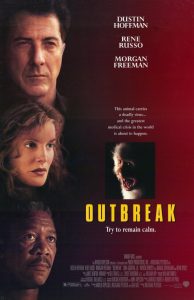
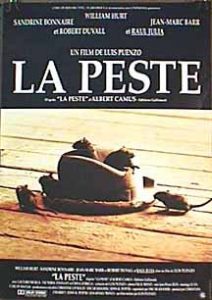
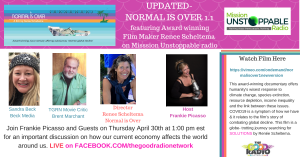

“Someone Somewhere” (“Deux moi”) (2019 production, 2020 release). Cast: François Civil, Ana Girardot, Camille Cottin, François Berléand, Simon Abkarian, Eye Haidara, Rebecca Marder, Pierre Niney, Paul Hamy, Maria Bunel, Patrick d’Assumçao, Vincent Scalera, Emmanuelle Bouaziz, Quentin Faure, Jeanne Arènes, Michel Lerousseau, Dady Saint-Thomas, Jessé Rémond Lacroix, Hamza Ouechtati. Director: Cédric Klapisch. Screenplay: Santiago Amigorena and Cédric Klapisch. Web site. Trailer.
Being alone can be one of the most heart-wrenching experiences any of us can endure. The sense of loneliness frequently weighs heavily on us when we’re uninvolved; the lack of attachment, of connection, eats away at us and leaves us emotionally empty. What’s often worse, though, is having such an experience and not even realizing why we feel the way we do – or that it even might matter, not only in terms of companionship, but also what it could do to us as individuals. So it is for a pair of lonely young Parisians seeking to find themselves – and their destiny – in the insightful new French romantic comedy, “Someone Somewhere” (“Deux moi”).
Warehouse worker Rémy Pelletier (François Civil) and cancer researcher Mélanie Brunet (Ana Girardot) lead remarkably parallel lives but without knowing it. They live side by side in adjacent buildings on the same Parisian street. They both suffer from unexplained sleep issues (Rémy an insomniac, Mélanie a hypersomniac). They each often find themselves lost for words to explain their feelings or their sense of self. They even cross paths with one another, without recognition, on the street, at the local grocery store and in the neighborhood pharmacy. It’s almost as if they’re invisible to one another, despite their many commonalities.
[caption id="attachment_11460" align="aligncenter" width="350"]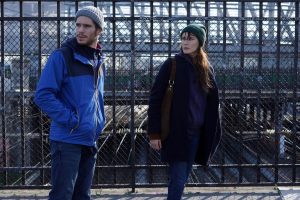 Parisian singles Rémy Pelletier (François Civil, left) and Mélanie Brunet (Ana Girardot, right) lead parallel lives, and they even cross paths often, but nearly always without recognition, as seen in the new French romantic comedy, “Someone Somewhere” (“Deux moi”). Photo by Emmanuelle Jacobson-Roques, courtesy of Distrib Films US.[/caption]
Parisian singles Rémy Pelletier (François Civil, left) and Mélanie Brunet (Ana Girardot, right) lead parallel lives, and they even cross paths often, but nearly always without recognition, as seen in the new French romantic comedy, “Someone Somewhere” (“Deux moi”). Photo by Emmanuelle Jacobson-Roques, courtesy of Distrib Films US.[/caption]
But, despite their many mutual qualities and experiences, the most significant trait Rémy and Mélanie share is an ill-defined sense of being unsettled. This restlessness may help to explain the sleep disorders to a certain extent, but, as they slowly come to discover, those maladies are symptomatic of something deeper, feelings that need to be probed and unearthed if those lonely souls are ever to get any satisfaction (not to mention a good night’s rest). And it’s something that needs to be addressed sooner rather than later, for it’s beginning to affect other areas of their lives: Mélanie’s job performance starts to suffer, and Rémy experiences a health scare when he passes out on a Paris subway from a sudden and unexpected panic attack. As a consequence, they both begin seeing psychiatrists to help them sort out their issues – and to help them get past their respective bouts of despair.
Mélanie’s weariness, as it turns out, stems from her unresolved grief over the loss of her relationship with Guillaume (Quentin Faure), a boyfriend she adored and with whom she thought she would spend her life. However, as her therapist (Camille Cottin) helps her discover, Mélanie has not given herself permission to let go of the hurt and move on. She also learns that, if she’s ever going to be happy in another romantic involvement, she needs to place her own needs on the same level as those of a partner, to give up being a perpetual people-pleaser, to recognize that she deserves to be just as happy as the recipient of the love and affection she so freely gives. But, to get the ball rolling toward such a goal, Mélanie also needs to take steps to get herself back in the game, to try her hand at meeting others and dating again – provided that she keeps the foregoing considerations in mind.
[caption id="attachment_11461" align="aligncenter" width="350"]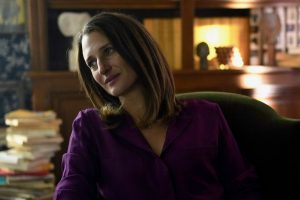 The guidance of a helpful therapist (Camille Cottin) proves beneficial to a young patient afflicted with a sleep disorder and other issues in the new French romantic comedy, “Someone Somewhere” (“Deux moi”). Photo by Emmanuelle Jacobson-Roques, courtesy of Distrib Films US.[/caption]
The guidance of a helpful therapist (Camille Cottin) proves beneficial to a young patient afflicted with a sleep disorder and other issues in the new French romantic comedy, “Someone Somewhere” (“Deux moi”). Photo by Emmanuelle Jacobson-Roques, courtesy of Distrib Films US.[/caption]
Rémy’s circumstances prove to be more of a conundrum, and the somewhat cryptic tactics used by his therapist (François Berléand), at least initially, don’t make solving this puzzle any easier. On some level, though, Rémy’s counselor recognizes that his patient’s case is a tougher nut to crack, given that he doesn’t appear to have a clue what the underlying issue is. Rémy is single and hasn’t dated anyone for some time, so there’s no apparent relationship baggage. His work life is going well, and he’s even been the recipient of a recent promotion. He also has a co-worker, Djena (Eye Haidara), who seems to be showing some interest in him, at the very least as a friend, if not more. In fact, if anything, he seems to be faring better than most everyone else around him.
So what’s at the heart of Rémy’s story? That’s what he needs to figure out, something for which he needs to dig deep to find resolution. And, in all likelihood, that explains his therapist’s enigmatic approach; he knows that Rémy will need to find his own answers, and, to do that, he’s also aware that his patient will need to do his own work. If he were to attempt to spoon-feed the answers to Rémy, the impact of the explanation for his situation wouldn’t be nearly as revelatory – or as powerful.
As Mélanie and Rémy set off on their respective journeys of personal discovery, not all of the advice they receive comes from their psychiatry sessions. They also get more than their share of good practical guidance from Mansour (Simon Abkarian), the owner of the neighborhood grocery store. That everyday support runs the gamut of subjects, from cat food recommendations to entertainment suggestions to thoughts on what makes life worth living. Mansour thus serves as a sort of real world sage, an effective counterpart to his clinical peers who unwittingly but decidedly helps steer his clients toward happiness, even if in his own small but special way.
[caption id="attachment_11462" align="aligncenter" width="350"]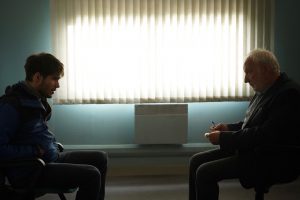 After an unexpected panic attack, warehouse worker Rémy Pelletier (François Civil, left) consults a therapist (François Berléand, right) to help him discover the cause in the new French romantic comedy, “Someone Somewhere” (“Deux moi”). Photo by Emmanuelle Jacobson-Roques, courtesy of Distrib Films US.[/caption]
After an unexpected panic attack, warehouse worker Rémy Pelletier (François Civil, left) consults a therapist (François Berléand, right) to help him discover the cause in the new French romantic comedy, “Someone Somewhere” (“Deux moi”). Photo by Emmanuelle Jacobson-Roques, courtesy of Distrib Films US.[/caption]
By now, you might be wondering how all of this makes “Someone Somewhere” a romantic comedy. Well, that’s what viewers, like the protagonists, will have to find out for themselves. Despite the seeming seriousness of this story, it’s full of plenty of laugh-out-loud moments, and there’s more than a little romance involved, even if it doesn’t necessarily take the form one might expect. But, trust me, all of these narrative elements do tie together, making for a thoughtful, insightful, genre-busting romantic comedy that pleases in highly unusual and extremely satisfying ways. Be aware, though, that you’ll have to exercise some patience in getting to the payoff, a quality that, in itself, poetically reinforces the whole point of the movie.
As the film’s narrative suggests, there’s a lot going on beneath the surface in this picture, and that’s quite fitting when it comes to its philosophical underpinnings, most notably those that relate to the conscious creation process, which maintains we draw upon the power of our thoughts, beliefs and intents in manifesting the reality we each experience. That becomes more than apparent in the character of the lives led by Rémy and Mélanie. And, even if they’re personally unaware of this philosophy’s principles, they nevertheless practice them – for better or worse – in shaping their respective existences.
From the nature of this story, however, it’s also obvious that they’re not especially happy with their circumstances. That’s because neither of them is realistically in touch with their thoughts, beliefs and intents. It’s what makes Mélanie wonder why she’s a hypersomniac and why Rémy is unable to effectively describe himself, something that occurs repeatedly throughout the film. Thus, the first step each of them must take is identifying the motivations that drive them so that they can see how they translate into the manifestations that surround them.
[caption id="attachment_11463" align="aligncenter" width="350"] Mansour (Simon Abkarian), owner of a neighborhood Parisian grocery store, doles out pearls of wisdom to his customers on a variety of subjects in director Cédric Klapisch’s latest offering, “Someone Somewhere” (“Deux moi”). Photo by Emmanuelle Jacobson-Roques, courtesy of Distrib Films US.[/caption]
Mansour (Simon Abkarian), owner of a neighborhood Parisian grocery store, doles out pearls of wisdom to his customers on a variety of subjects in director Cédric Klapisch’s latest offering, “Someone Somewhere” (“Deux moi”). Photo by Emmanuelle Jacobson-Roques, courtesy of Distrib Films US.[/caption]
An important aspect of this is being authentic with themselves. That, however, may be easier said than done. For example, it can be all too easy to be in denial about what we think and feel, making it possible to fudge the truth and deceive ourselves, and that explanation is frequently floated as a likely cause in situations such as this. But there may be a simpler explanation behind this – we just may not know what drives us and the subsequent creation of our reality. When that’s the case, as it seems to be with Rémy and Mélanie, getting the process off the ground can be especially difficult, because one doesn’t have a clue where to begin, let alone know how to proceed.
That’s where the counselors – both formal and informal – come into play. They serve as sounding boards, helping their patients find ways to gain traction in discovering their authentic selves. And, in their own way, that’s probably why Rémy and Mélanie drew these professionals into their lives in the first place. Having no idea how to get started and having had no previous experience dealing with therapists, they needed to try something different to help them get off the dime. Launching the process in this way may take some time, and progress might be slow, but, if it gets things moving when nothing else does, then it’s likely worth the effort, especially when results begin to materialize.
Once armed with this information, it then becomes possible to pinpoint the items of satisfaction and discontent in our reality. And, knowing that our thoughts, beliefs and intents shape what manifests, it’s also possible to rewrite the existing notions to improve the nature of the resulting existence. By eliminating what doesn’t work and replacing those dysfunctional elements with new ones that do, we can mold a new framework, create a new template for the reality we would like to experience.
[caption id="attachment_11464" align="aligncenter" width="350"] When a new co-worker comes to her department, CSR Djena (Eye Haidara) takes an interest in him that may involve something more than just friendship in the new French romantic comedy, “Someone Somewhere” (“Deux moi”). Photo by Emmanuelle Jacobson-Roques, courtesy of Distrib Films US.[/caption]
When a new co-worker comes to her department, CSR Djena (Eye Haidara) takes an interest in him that may involve something more than just friendship in the new French romantic comedy, “Someone Somewhere” (“Deux moi”). Photo by Emmanuelle Jacobson-Roques, courtesy of Distrib Films US.[/caption]
That’s the odyssey Rémy and Mélanie embark upon through their counseling experience. When answers begin to emerge regarding their personal dissatisfaction, their sleep disorders and other issues, they have opportunities to turn matters around. And it’s truly astounding what those changes can accomplish, both in the areas of immediate concern, as well as in others that may not have been considered. That can open up tremendous new vistas for unexpected and remarkably fulfilling new destinies.
In bringing about such outcomes, there are inevitably clues that appear along the way, leading us in the direction of those new futures. Those clues frequently take the form of synchronicities, those astonishing “coincidences” that seem so perfectly tailored to our particular needs that they simply can’t be random chance. They serve as guideposts that point us toward where we should go. And, if we play our cards right, there’s no telling where that might take us, as Rémy and Mélanie come to find out.
How refreshing it is to see an intelligent romantic comedy that entertains and enlightens while successfully breaking all the rules of the genre. This latest offering from French director Cédric Klapisch serves up a warm, funny, smartly written tale that presents fresh, realistic insights on romance without ever becoming schmaltzy or saccharinely sentimental. Leads François Civil and Ana Girardot turn in fine, exceedingly natural performances that are totally believable and never stretch credibility. And then there’s the cinematography, which shows off the beauty of the French Alps and aspects of Paris probably never seen by outsiders, many of them symbolically and fittingly shot in the shadow of the Basilica of Sacre Cour (Sacred Heart). Through it all, the film takes viewers on quite an emotional journey on its way to its climax, but the trip is well worth it, providing the basis for a joyful and satisfying conclusion. This is a truly terrific film – don’t miss it.
The current closure of moviehouses, unfortunately, could hurt this picture’s chances of finding an audience. However, thankfully, “Someone Somewhere” is available for first-run online streaming. Here’s hoping it develops a following and finds the viewers it deserves – not to mention those who would benefit most from seeing it.
Admittedly, relationships are not everyone’s cup of tea. But, for most of us, we tend to feel and function better when we have someone special in our lives. To find our other half, though, we must first find ourselves, developing an ability to love our own being before we can do so for another. If we succeed at that, however, we just might discover that a soul mate is out there, that there really is someone, somewhere.
Copyright © 2020, by Brent Marchant. All rights reserved.
At a time when it seems coverage of the global pandemic is virtually everywhere (and inescapable), it’s hard to believe that there are those out there who can’t get enough about the subject, even when it comes to entertainment. Some – myself included – might find the notion somewhat maudlin or ghoulish, but each of us has our reasons, perhaps an interest in knowing more about the topic or simply just having a morbid curiosity. In any event, for those who possess such an insatiable appetite for the material, there are three films available for home viewing that could help to shed new light on the subject.
Those interested in a film that examines the concept of a pandemic from a comprehensive viewpoint might want to consider director Steven Soderbergh’s 2011 release, “Contagion” (web site, trailer). The picture looks at the subject from multiple angles, including the search for the disease’s origin, the effect on victims and survivors, the work of researchers to find a cure and the impact on everyday life. Viewers will likely find this offering to present a remarkably accurate – and often chilling – depiction of what we’re experiencing, almost as if our current real world situation is following the same script as that used to construct this film. “Contagion” features an impressive all-star cast, including Gwyneth Paltrow, Matt Damon, Laurence Fishburne, Jude Law, Marion Cotillard, Kate Winslet, Bryan Cranston, John Hawkes, Jennifer Ehle and Elliott Gould. The curious are likely to walk away from this one with new insights into what’s going on – and what to expect – as well as wondering which side of the screen they find themselves on.
 The internet lights up in the wake of a public health crisis, thanks in part to provocative bloggers like Alan Krumwiede (Jude Law), in the 2011 disaster drama, “Contagion.” Photo by Claudette Barius, courtesy of Warner Bros.[/caption]
The internet lights up in the wake of a public health crisis, thanks in part to provocative bloggers like Alan Krumwiede (Jude Law), in the 2011 disaster drama, “Contagion.” Photo by Claudette Barius, courtesy of Warner Bros.[/caption]


Tune in for the latest Cinema Scribe segment on Bring Me 2 Life Radio, Tuesday, May 5, at 2 pm ET, available by clicking here. And, if you don't hear it live, catch it later on demand, with new listening options available! In addition to Spreaker, the show is now available on iHeart Radio, Spotify, Podcast Addict and Podchaser!






